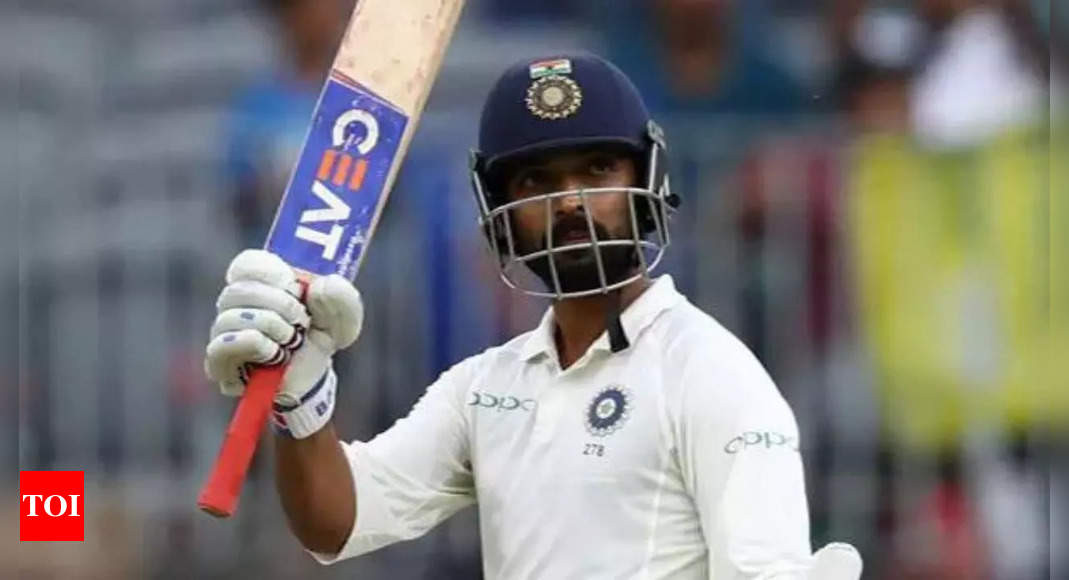India's Pink-Ball Test Debacle: A Repeat of History?
The Adelaide Oval, a venue usually associated with high-scoring thrillers, became the stage for a dramatic collapse by the Indian cricket team in the second Test against Australia. This wasn't just any collapse; it echoed the infamous 36 all out debacle of their last day-night Test at this very ground. This article will examine the key moments that led to another shocking turn of events and the impact on the series.
The First Session: A Promising Start, Then Sudden Chaos
India, electing to bat first, initially seemed to be making steady progress. KL Rahul and Shubman Gill established a promising opening partnership, showcasing elegant cover drives and patient batting. They seemed to have got India off to a fluent start after Starc shocked them early. Rahul had his fair share of luck earlier in the innings. He nicked behind to the wicketkeeper off the first ball bowled by Scott Boland but he was saved by the umpire calling it a no ball. Rahul was later dropped off the fifth ball of the same over. However, this early success was short-lived. The introduction of Mitchell Starc into the attack proved to be a turning point. His lethal pace and ability to extract extra bounce wreaked havoc, dismissing Yashasvi Jaiswal for a golden duck off the very first ball of the match and then getting another big breakthrough by sending back Virat Kohli. Starc's fiery spell, coupled with a crucial wicket from Scott Boland, who replaced the injured Josh Hazlewood, saw India plummet from a comfortable position to a state of disarray. KL Rahul didn't know whether to play or leave, Kohli didn't know whether to play or leave and India suddenly lost two wickets in consecutive Starc overs. Then Boland trapped Gill right in front of his stumps and India went from cruising along in the first session to hanging on for dear life. Life can change within moments in a Test match, more so if the ball being used is pink in colour.
The Starc Factor
Mitchell Starc's performance in the first session was nothing short of exceptional. His ability to extract extra bounce and swing the pink ball under the lights made him virtually unplayable. Starc rattled India early by dismissing the dangerous Yashasvi Jaiswal for a golden duck off the very first ball of the match. Starc was then brought back towards the end of the first session and responded by dismissing KL Rahul for 37 off 64 balls, thus ending a 69-run stand between him and Shubman Gill. India then suddenly lost two more wickets and Australia finished in front at the end of the first session. Starc got Kohli in his next over and then Shubman Gill fell to Scott Boland after scoring 31 in 51 balls. This spell highlighted his importance to the Australian team and his prowess in day-night Tests. His figures at the end of the first session were a testament to his skills and the pressure he exerted on the Indian batting line-up.
The Second Session: A Fightback, But Ultimately Futile
The second session saw a brief period of resistance from Rishabh Pant and Nitish Reddy. The pair attempted to rebuild the innings, but the Australian bowlers maintained relentless pressure. Pat Cummins, seemingly regaining his form, demonstrated a sudden burst of his hit-the-deck mojo. His pace and bounce proved too much for Pant, resulting in a crucial wicket. The partnership between Ashwin and Reddy, though briefly showing promise, eventually succumbed to the pressure and Australia maintained control. This partnership is officially into "handy" territory now, 24 off just 26 deliveries. Ashwin, known for his astute batting skills, added a few boundaries by lofting the ball uppishly over the infield, but his and Reddy’s efforts were not enough to prevent further wickets from falling.
The Cummins Comeback
Pat Cummins's sudden resurgence in the second session was a significant turning point. After a relatively quiet performance in Perth, his pace and ability to generate bounce from short deliveries were back on display. He dismissed Rishabh Pant with a ripper of a ball that hit the handle of the bat and then went on to bowl the first delivery again and it is an absolute brute of a bouncer at 143kph, it hits Reddy's forearm and goes behind for four byes. This showed his determination to make amends for his previous match's performance and added to Australia's dominance.
The Twilight Struggle: A Familiar Feeling of Despair
The final session witnessed a continuation of the struggle, mirroring the challenges India faced in their previous day-night Test in Adelaide. The twilight period, as Cheteshwar Pujara aptly described, presented significant difficulties for the batsmen. The fading light and the combination of daylight and stadium lights created tricky batting conditions, making it difficult for batters to judge the ball. This familiar situation led to further wickets falling, leaving India with a substantial deficit. Facing the pink ball is not easy for the batters and the problems get compounded during that phase of the day which is neither day nor night. The strike rate in the final session of days in pink ball Tests is significantly higher than the red ball versions. The difference is even starker in Australia. The average in this session in 12 pink-ball Tests played thus far in Australia sits at 24.33, even lesser than the first session average of 23.60. The lack of experience in these challenging conditions appeared to affect India’s performance.
Ghosts of Adelaide Past
The day-night Test in Adelaide holds a significant place in cricketing history and particularly in the memories of the Indian team, recalling the shock of the 36 all out. This match served as a painful reminder of that catastrophic innings, with the similar challenges of twilight conditions and the added pressure of not wanting a repeat performance. This time, though the result wasn't as catastrophic, the parallels in the second innings and the difficulties faced once again highlighted the vulnerabilities of the Indian batting line-up against the Australian pace attack. This would be a situation that will stay in the memories of the Indian players for quite some time to come.
The Australian team will no doubt be aiming for a complete victory in this match and further success in the series. For India, rebuilding the batting confidence will be crucial for future success in the series. The challenges faced in Adelaide are a clear indication of what is needed to be done ahead of the next game.



















